Go the extra mile
Towards a cooler planet
The current state of New Zealand's environment
1 February 2023
Did you know that 94% of New Zealand's reptiles are at risk of disappearing? This fact, from the Environment Aotearoa 2022, shows how our biodiversity is struggling. The report, released every three years, uses almost 50 indicators to check the state of our environment and its effect on our health.
The report highlights the big challenges our natural world faces. For example, we've lost 54% of our best agricultural land since 2002. Also, many places have air pollution levels above the World Health Organization's safe limits in 2021.
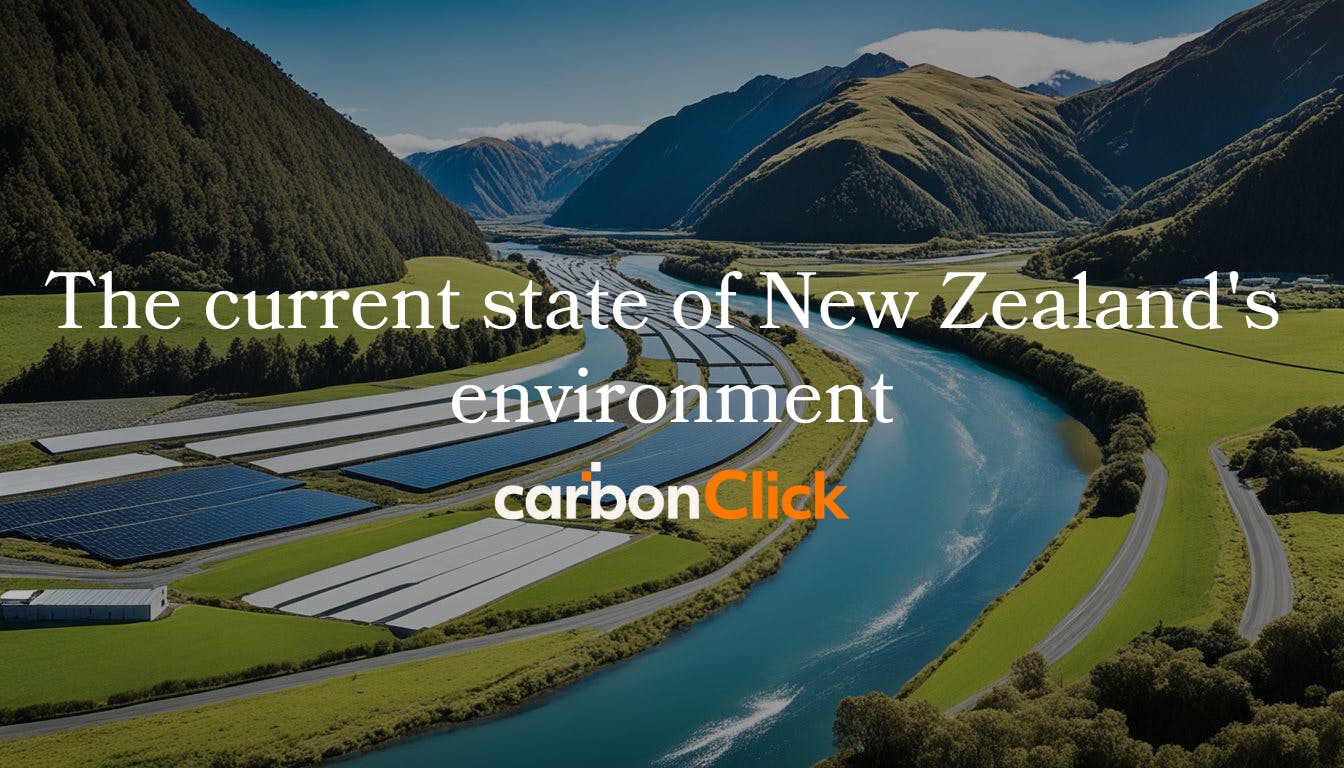
The current state of New Zealand's environment
This report is more than just numbers. It shows how our environment's health is doing. Over 70% of our birds that live on land could soon be extinct. We're also seeing more short-term droughts, which means our climate is getting warmer. This leads to melting glaciers and rising sea levels.
Environment Aotearoa 2022 is all about clear and strong data. It gives New Zealanders the facts they need to make better choices about our environment.
Legislation and Policies
New Zealand has strict laws to address environmental challenges. These laws help combat climate change and support environmentally conscious policies. For example, the Electric Vehicle Programme started in 2016, aiming to grow the electric car fleet by 2021.
This effort is part of a bigger plan for sustainable development. In 2015, New Zealand put a lot of its research and development budget into environmental projects. This shows its strong commitment to leading in sustainability.
Public Opinion on Environmental Issues
People in New Zealand have a positive view of the environment, valuing its 'clean and natural' image. Public views help shape policies for government and businesses. The Sustainable Business Council notes a rise in businesses focusing on sustainability.
This change leads to more investment in sustainable tech and cutting carbon emissions in sectors like transport and energy. New Zealand is seen as a leader in global climate efforts, boosting its environmental commitment at home and abroad.
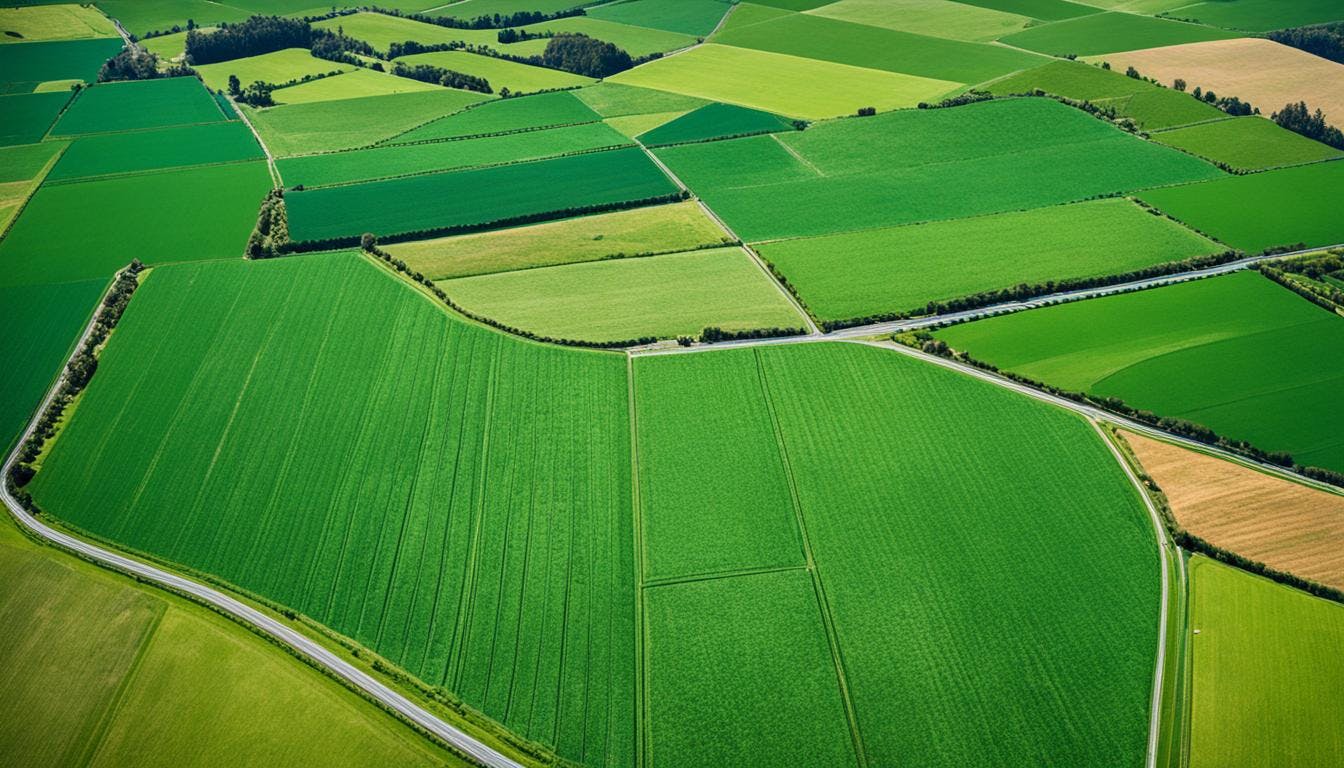
Impacts of land use change and intensification
Significant changes in land use in New Zealand are putting a lot of pressure on the environment. These changes affect the country's land availability, ecological stability, and how we manage the land. The move to use land more intensively is due to economic, social, and regulatory factors. This change is reshaping the landscape and affecting society and the environment in many ways.
Land Availability for Agriculture
The availability of land for farming in New Zealand has changed a lot. There's been a rise in small farms with a house, adding 64,165 hectares. This has made using land efficiently harder, lowering farming productivity. The growth in dairy farming has also led to more land being used for dairy farms, making farming more intense.
Key Takeaways
- 94% of reptiles in New Zealand are threatened with extinction.
- Nearly three-quarters of terrestrial birds are at risk.
- There has been a 54% increase in highly productive land unusable for agriculture since 2002.
- Pollution levels in many areas surpass WHO 2021 guidelines.
- Increased short-term drought frequency has been observed, affecting climate and human activities.
Overview of New Zealand’s environmental health
New Zealand is known for its rich biodiversity and strong environmental policies. It has a population of 4.6 million and aims to cut greenhouse gas emissions by 30% by 2030. The goal is to reach net zero emissions by 2050, excluding biogenic methane, showing a strong commitment to climate action.
The country also focuses strongly on renewable energy, producing about 80% of its electricity from renewable sources. This shows its dedication to sustainable development.
Between 2002 and 2019, New Zealand lost 54 percent of its productive land to non-farming uses. This shows how urbanisation is affecting rural and farming areas, reducing land for traditional farming. This change makes farming less economically viable and harms the environment by causing erosion and reducing biodiversity.
Urbanisation and Habitat Loss
Urban growth in New Zealand has led to a lot of habitat loss and a decline in environmental quality. Cities expanding have taken over natural habitats, putting endangered species at risk and upsetting ecosystems. The drive for more land due to population growth and economic development needs new solutions to lessen its bad effects.
The 2022 Environment Aotearoa report shows that urbanisation is a big cause of habitat loss and environmental decline. To tackle these issues, the government has brought in rules and policies to protect farming land and keep vital habitats safe.
"Human habitation has historically placed pressure on the natural equilibrium, impacting ecosystems and species over time."
It's important to find a middle ground. Increasing production in the same areas might help now, but using land in a sustainable way is better for the long term. The Māori perspective, which sees land, people, and nature as connected, could guide us to a better relationship with our natural world. This approach could improve how we use land in New Zealand and benefit everyone living there.
Pollution and Air Quality
New Zealand's air quality has improved a lot in recent years, especially in big cities. But, some cities still face air pollution issues, going beyond WHO guidelines.
Current Air Quality Levels
Recently, nine out of fifteen areas in New Zealand met the air quality standards for PM10. More than three-quarters of PM10 sites follow daily standards. However, only one region, Northland, meets both annual and daily WHO guidelines for PM2.5. Less than a quarter of PM2.5 sites hit the daily WHO guideline.
But, most towns and cities have seen better air quality over the last ten years. This shows that pollution control efforts are working well.
Pollution Sources
Cars and farming are the main causes of pollution in New Zealand. Cars emit greenhouse gases and fine particles like PM10 and PM2.5. NO2 levels in cities often go beyond WHO limits, especially near busy roads.
Home heating adds to PM10 levels in winter. In places like Washdyke, dust from various sources increases PM10 pollution.
Efforts to Improve Air Quality
Many actions are being taken to make New Zealand's air cleaner. Laws like the NES-AQ and guides from the Ministry for the Environment help control pollution. The CARP aims to stop PM2.5 events by 2030.
The NZ Transport Agency is promoting more sustainable transport options. This includes walking, cycling, and electric vehicles. Public awareness and new technology are key to improving environmental health in New Zealand. Tools like the Air Quality Screening Model help manage air quality from transport.
With these efforts, New Zealand is working towards cleaner air and a better life for everyone.
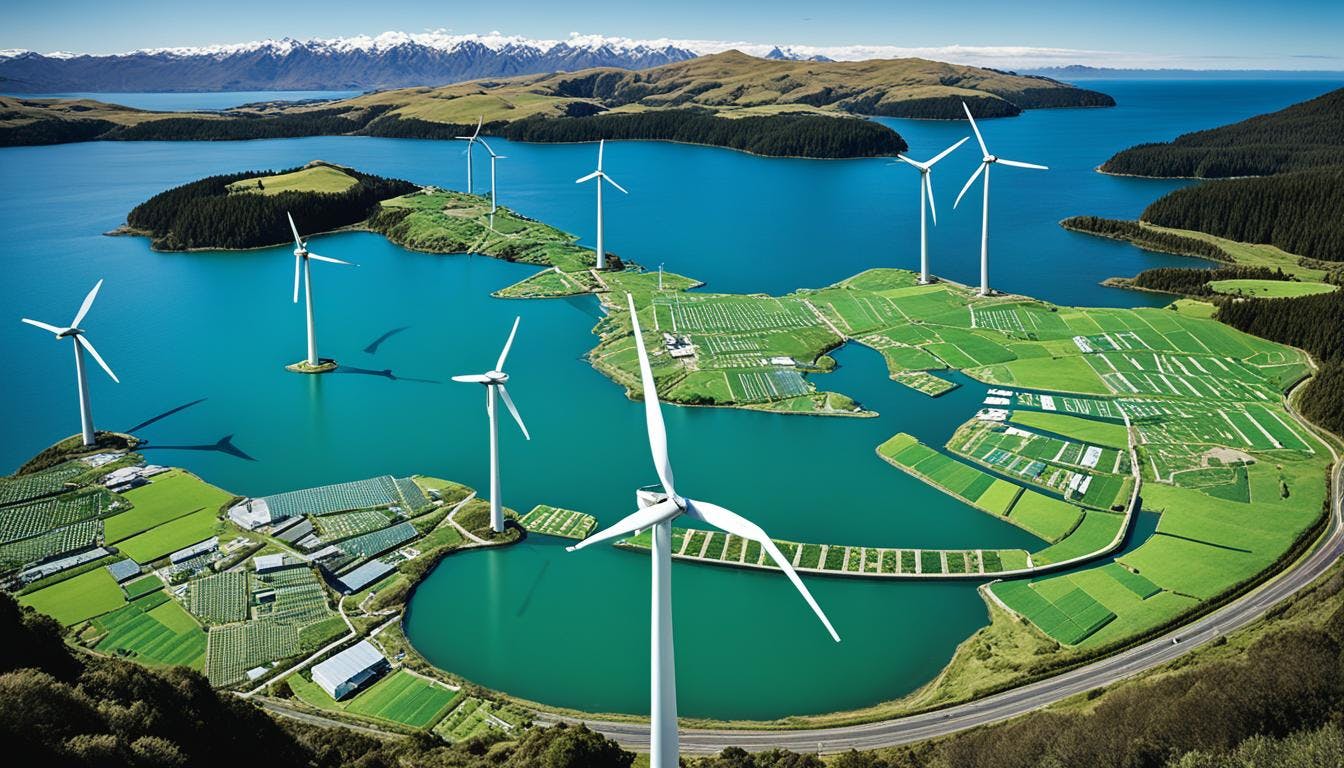

Effects of invasive species
New Zealand's unique ecosystems face big threats from invasive species. These species have led to the loss of nearly half of its vertebrate fauna in 700-800 years. In just twenty years from 1860 to 1880, Europeans introduced 138 bird species.
This, along with land clearance and the introduction of deer, rabbits, and possums, has caused huge environmental damage. The need for conservation programmes New Zealand has never been greater.
Threats to Indigenous Species
Invasive species have made many native species vulnerable. Smaller birds faced threats from cats, rats, and dogs, leading to many extinctions. These invaders often outcompete native wildlife, reducing biodiversity.
In the last 200 years, 16 land bird species went extinct mainly due to human actions and invasive species. Now, species like the Australian and Asian paper wasps are a problem, needing bait stations in national parks.
The first detection of the lake-altering species Lindavia intermedia and Didymo algae in the early 2000s has disrupted aquatic ecosystems.
Conservation Efforts
There are big efforts to address these invaders and protect native wildlife. Eradicating and managing invasive mammals costs a lot but is crucial. The Predator Free 2050 programme aims to get rid of pests like possums and rodents by mid-century.
Community projects like the Rotoiti Nature Recovery Project show the nation's commitment. Volunteers have removed over 40,000 pests from Nelson Lakes National Park. New Zealand leads the world in eradicating invasive species, using advanced techniques and setting big goals.
Since 2004, no new marine invaders have been found, thanks to strict prevention.
Climate change and its effects
Climate change in New Zealand is making big changes to the environment. These changes affect nature and human systems a lot. Sea level rise and more droughts are just a couple of the signs of a warming climate.
Rising Sea Levels and Melting Glaciers
The most clear sign of climate change in New Zealand is the rising sea levels. Experts say sea levels could go up by a metre by 2100. This puts about two-thirds of New Zealanders at risk who live near the coast. Also, the famous glaciers of New Zealand are melting.
Environment Aotearoa 2022 shows how these glaciers are moving back because of the warmer weather.
New Zealand's glaciers and snowlines are moving back, affecting alpine jobs and ski tourism. This also changes how water flows, which affects ecosystems and how people use water.
Increased Frequency of Droughts
Another big problem from climate change in New Zealand is more droughts. Some areas get hit with short-term droughts more often. This hurts agriculture, which is key to New Zealand's economy.
Dairy, meat, fruit, and wine production are all under threat from these extreme weather events. Aquaculture and fisheries are also struggling. Changes in fish and new pests or diseases in warmer waters are big worries for these important industries.
Climate change is also affecting public health in New Zealand. Warmer temperatures and more heatwaves are dangerous for the elderly, babies, and people who work outside. To tackle these issues, everyone needs to work together to adapt to and address the effects of climate change.
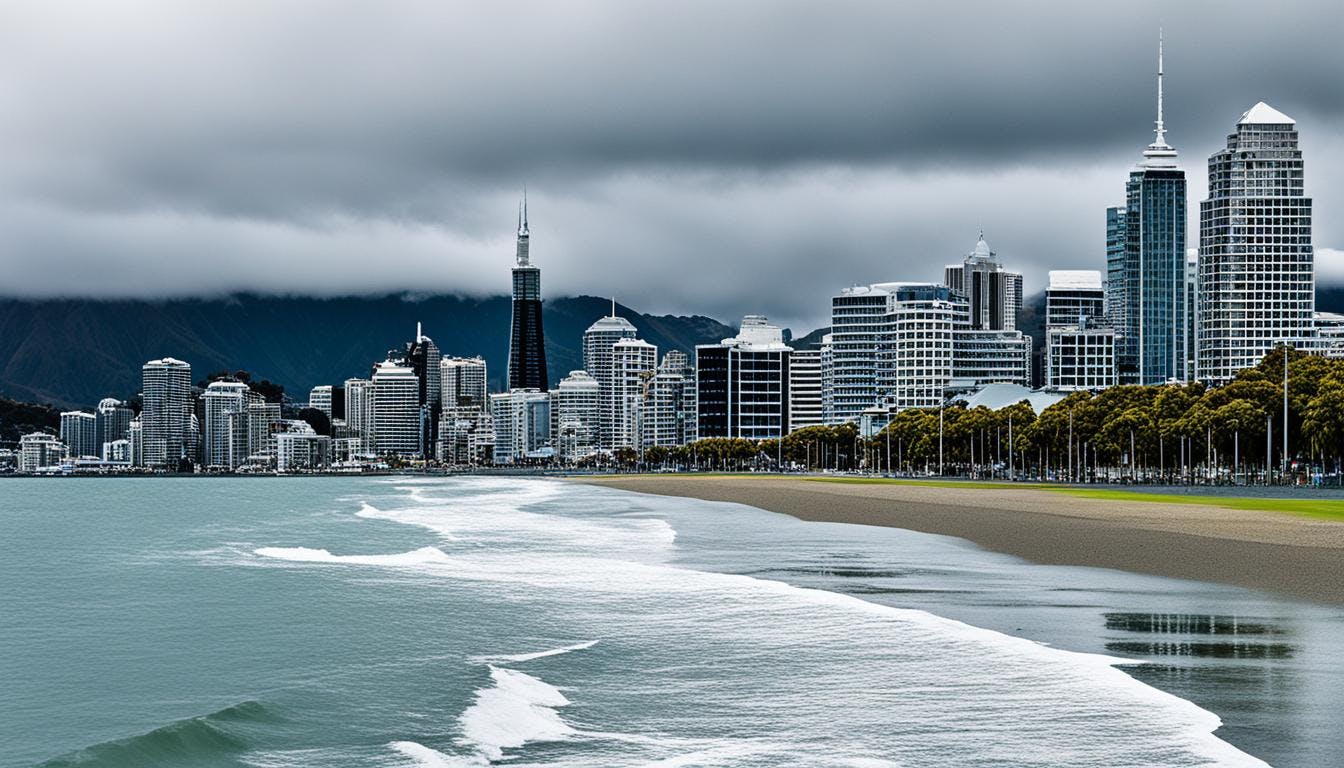

Rare ecosystems and indigenous species
New Zealand is home to rare ecosystems and unique plants and animals. Its long isolation has made its biodiversity special. Almost 4,000 of its species are at risk of disappearing.
From tall plants to different birds, these ecosystems need careful protection. We must act to save them.
Endemic Flora and Fauna
New Zealand's lush landscapes are full of species found only here. Since humans arrived, over 75 animal and plant species have gone extinct. This includes 59 birds.
Marine life is also under threat, with 90% of seabirds and 80% of shorebirds at risk. Just 63 Māui dolphins are left.
Today, forests and shrublands cover about 23% and 10% of New Zealand. This is much less than before humans came. The number of tree species varies across the country, shaped by past events like glaciers and volcanoes.
These events have made the forests diverse but also endangered. We are working hard to protect these habitats.
Conservation Strategies
New Zealand has many conservation plans to protect its ecosystems. These include laws, restoring habitats, and creating areas free from predators. These efforts help reduce the risk of extinction and boost species numbers.
Marine conservation is a key focus, protecting native sea mammals and birds. On land, we work to reduce human impact and increase biodiversity. Policies and community support are vital for success in conservation.
By working together, we can ensure a future for New Zealand's unique ecosystems and species.
State of New Zealand’s environment: Key findings
The state of New Zealand’s environment is shown through detailed reports like Environment Aotearoa 2022. These reports are crucial for understanding the health of the country's ecology.
Environmental Indicators
Greenhouse gas emissions are a key indicator in New Zealand. Since 1990, emissions have gone up but have been steady since 2006. In 2021, there was a 0.7% drop, mainly due to less emissions from farming.
Agriculture and energy, including transport, are big contributors to emissions. In 2021, farming made up 49% and energy 41% of emissions. Methane and nitrous oxide from farming make up over half of these emissions.
On average, temperatures in New Zealand have risen by 1.26°C since the early 1900s. This has led to more extreme weather events, which have doubled in number. The weather patterns have changed too, with more rain in the south and less in the north and east.
Sea levels are rising everywhere, especially more so between 1961 and 2020 than before. This is a big worry for Maori interests in fishing, forestry, and farming due to climate change.
About 750,000 people and 500,000 buildings in New Zealand are at risk from extreme flooding. This shows how important it is to improve our environmental indicators and make data more transparent.
Our review of environmental reports shows we need better data for accurate environmental assessments. Better reporting and local data collection could give us a clearer picture of the environment. This would help everyone make informed decisions.
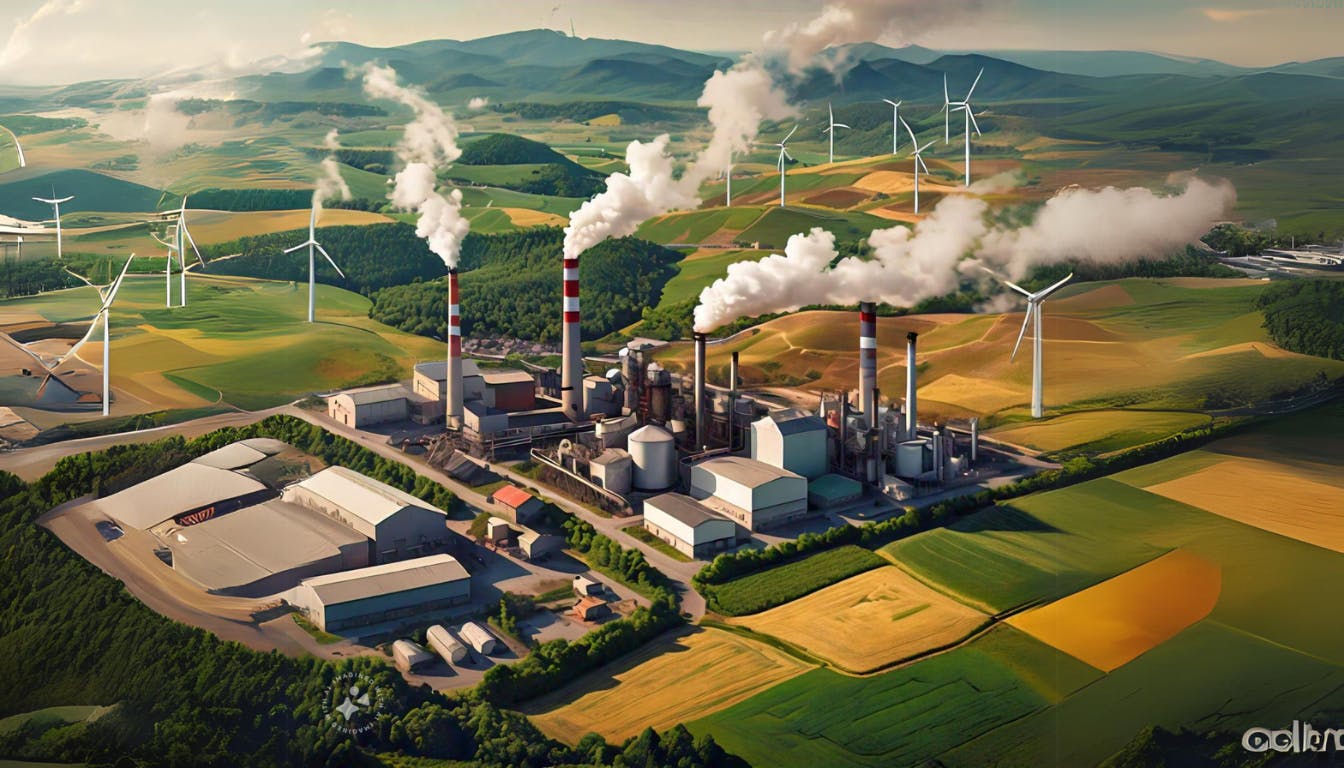
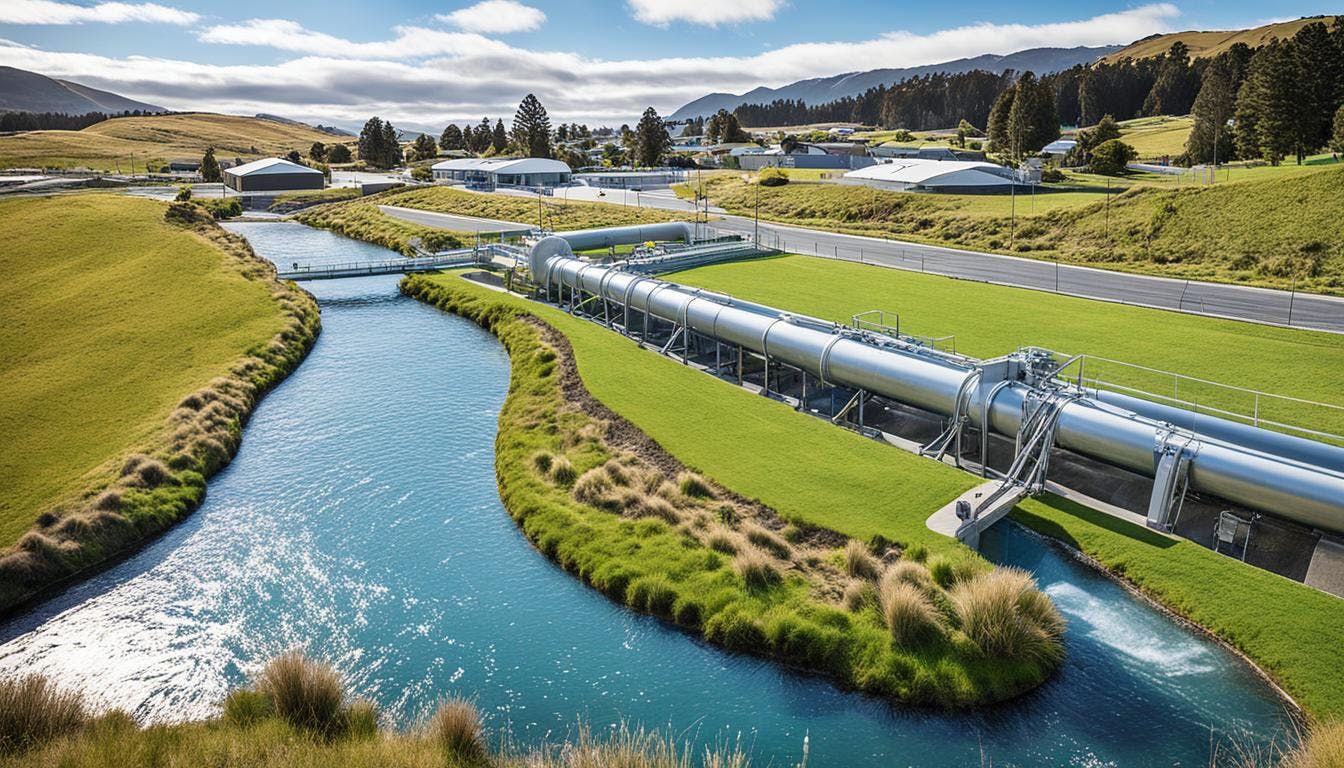
Water management and three waters reform
The Three Waters Reform New Zealand is a big change aimed at improving how we manage water. It aims to make our water system strong, sustainable, and efficient. This will be done by setting up new water service groups.
Challenges in Water Services
New Zealand has faced many problems with its water management. For example, high levels of lead were found in water in east Otago last year. This shows we need to make big changes.
Other issues include old infrastructure, more people moving to cities, and harming the environment. These problems make it harder to provide good water services. There's also worry about water services becoming private, which could affect everyone.
Goals and Progress of the Reform
The Three Waters Reform New Zealand wants to make water services better and affordable for the future. It plans to spend between $120 billion and $185 billion on new infrastructure over 30 years. The reform will create ten new local water services to give communities a stronger voice.
The main goals of the Water Services Reform Programme are:
- Ensuring safe and reliable drinking water.
- Improving how wastewater and stormwater affect the environment.
- Creating sustainable, strong, and efficient water and sewage services across regions.
- Keeping water services affordable for the future.
Taumata Arowai, the new water regulator, started looking after drinking water in 2021. By 2024, it will also manage wastewater and stormwater. This shows the government's strong commitment to better water management and safety.
Sustainable practices and business initiatives
New Zealand is moving fast towards sustainable practices. Businesses are putting a lot into environmentally conscious tech. The transport and energy sectors are leading the way with electric vehicles and renewable energy.
They're also working on improving water treatment and reducing farm emissions.
Investment in Environmentally Conscious Technologies
Environmentally conscious tech investments are changing sustainable business in New Zealand. Transport and energy are at the forefront, using more electric vehicles and renewable energy. They're also focusing on better water treatment and farm tech to cut emissions and work more efficiently.
Success Stories in Sustainability
New Zealand has many stories of success in sustainability. The Ministry has a plan from 2022 to 2025 to show its commitment. Even with a 71% increase in emissions last year, they cut emissions by 42.73% from 2017/18.
Companies are now focusing on addressing climate change, using the circular economy, and making their supply chains more sustainable. This is because of laws and more people wanting sustainable products and services.
Future Prospects
The future looks good for sustainable business in New Zealand. With more investments and new tech, companies aim to meet big emissions goals. Government policies and what consumers want will be key.
There are also chances for growth in responsible tourism and sustainable building. This could bring both good for the planet and economic gains.

Conclusion
New Zealand's environment shows both urgent concerns and positive steps. We are at a key point where our actions will shape the future. Our forests, with just 7% of their natural habitat left, and many bird species, like the kiwi, are in danger.
But, there is hope. The national Biodiversity Action Strategy shows our commitment to saving unique species. Our grasslands, untouched until European settlers arrived, highlight our unique nature. Also, cutting tariffs on sustainable products in the UK-New Zealand trade deal shows our focus on the environment and economy working together.
Most New Zealanders worry about climate change, pushing for change. Laws like the Three Waters and agreements with the European Union help tackle big environmental issues. Looking ahead, we must find a harmonious approach to development and nature. Everyone, from leaders to citizens, must work together to protect our land for the future.
FAQ's
What is the Environment Aotearoa 2022 report?
The Environment Aotearoa 2022 report is a yearly check-up on New Zealand's environment. It looks at how our environment affects our health and wellbeing. It uses nearly 50 indicators to give a full picture.
What are some of the major environmental challenges highlighted in the report?
Big challenges include changes in land use, pollution, and the spread of invasive species. Climate change and losing natural habitats are also big worries. Sadly, 94 percent of reptiles and nearly three-quarters of birds are at risk of disappearing.
Has New Zealand made any progress in improving air quality?
Yes, air quality has slightly improved, especially in key areas. But, many places still have pollution levels above what's safe, according to the World Health Organization’s 2021 guidelines.
How does New Zealand regulate its environmental health?
New Zealand has strong laws to cut down on carbon emissions. The goal is to be net zero by 2050. The government is also working on better water services through the Three Waters Reform Programme.
What is the public opinion on environmental issues in New Zealand?
People see New Zealand as 'clean and natural'. Many Kiwis and businesses are now focusing on being sustainable. They support the country’s environmentally conscious policies.
How have land use changes impacted New Zealand's environment?
Changes in land use and more urban areas have led to a 54 percent increase in land lost to farming from 2002 to 2019. This has hurt natural habitats and endangered native species.
What are the primary sources of pollution in New Zealand?
Pollution comes from both nature and human activities. Farming and car emissions are big contributors.
What measures is New Zealand taking to combat pollution?
The country is addressing pollution with laws, new tech, and awareness initiatives. These efforts aim to improve air quality and lower pollution.
Why are invasive species a concern in New Zealand?
Invasive species are a big threat to New Zealand's nature. They reduce biodiversity and threaten native species. Conservation efforts focus on controlling predators, restoring habitats, and creating safe areas for endangered species.
How is climate change affecting New Zealand?
Climate change is causing sea levels to rise and glaciers to melt. It also leads to more droughts, affecting nature, farming, and people. The Environment Aotearoa 2022 report highlights these issues as major concerns.
What efforts are being made to preserve endemic flora and fauna in New Zealand?
Conservation efforts include laws, restoring habitats, and creating safe areas without invasive predators. These help endangered species recover.
What are some of the key findings from the Environment Aotearoa 2022 report?
The report shows many species are at risk, more land is being used for farming and cities. Air quality is getting better, but pollution and climate change are still big problems.
What is the Three Waters Reform Programme?
The Three Waters Reform Programme aims for better, sustainable water services. It includes upgrading infrastructure to make drinking water safer and improve how we handle wastewater and storm water.
How are New Zealand businesses contributing to sustainable practices?
Kiwi businesses are investing in environmentally conscious tech, especially in transport and energy. They're adopting sustainable ways and supporting the country’s environmentally conscious goals. This leads to success stories and a promising future.
17 South Street
Auckland 1010
New Zealand
info@carbonclick.com- -
- X
Sign up. Be inspired. Get clicking.
Subscribe now to stay up to date with CarbonClick, carbon offsetting and climate action.
By signing up you agree to our Privacy Policy.


